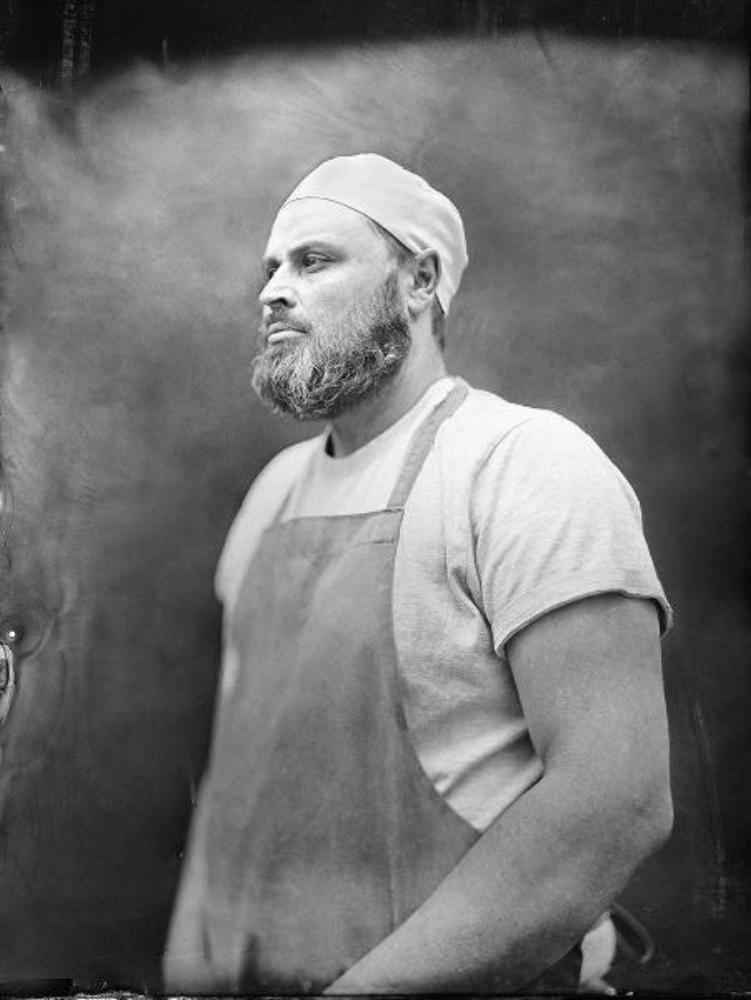About Collodion Wet Plate
The wet plate collodion process has undergone a revival as a historical technique over the past few decades and requires the photographic material to be coated, sensitised, exposed and developed within the span of about fifteen minutes, necessitating a portable darkroom for use in the field.
Original negatives are hand-made using a large format wooden camera and wet collodion process producing a unique singular photograph of pure silver onto a glass plate. Plates can be viewed as both positive and negative.
Using this archaic technique, Magda wanted to bring back the significance of this craft and draws great inspiration from August Sander who also used a large format camera process to create portraits of German society.
Platinum Print from Collodion Wet Plate
The platinum printing process is done by hand brushing light-sensitive emulsion based on platinum metal onto 100 % cotton paper and processed in a traditional darkroom using a negative.
Each copy is therefore unique. Although the cost of production is high due to the platinum salts present, it is one of the most archival images that can be printed on paper. Its permanence, high level of detail and visual beauty far exceed modern inkjet prints.



